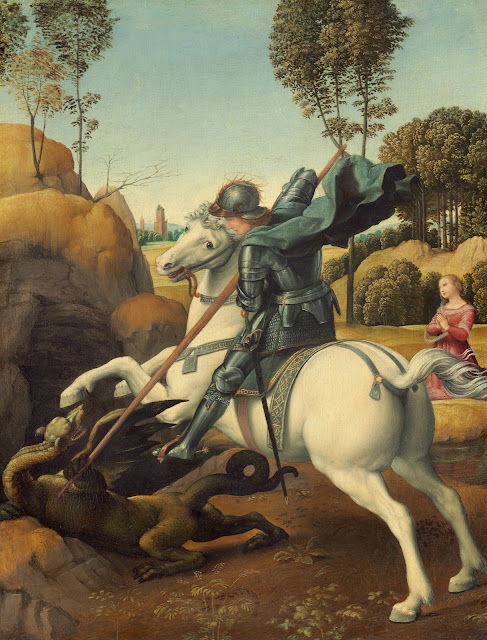The Entrance to the Grand Canal, Venice: A Glimpse into the Enchanting City of Canals
Nestled in the heart of Venice, Italy, lies a masterpiece that not only captures the splendor of this timeless city but also invites viewers to immerse themselves in its rich history and culture. "The Entrance to the Grand Canal, Venice," an iconic painting by the 18th-century Venetian artist Canaletto, is a visual journey through the enchanting labyrinth of canals, architecture, and life that defines Venice. In this article, we will explore the location, history, and beliefs that surround this captivating artwork.
The Artist: Canaletto
Before diving into the details of the painting itself, it is important to understand the artist behind this celebrated work. Giovanni Antonio Canal, known as Canaletto (1697-1768), was a renowned Venetian painter famous for his breathtaking cityscapes of Venice. His meticulous attention to detail and remarkable skill in capturing the city's unique atmosphere earned him recognition as one of the greatest vedutisti, or view painters, of the 18th century.
The Location: Venice, the City of Canals
Venice, often referred to as the "City of Canals," is a captivating and unique destination in northern Italy. Built on a network of over 100 small islands in the Venetian Lagoon, Venice's canals are the lifeblood of the city. Navigating through this maze of waterways is an experience unlike any other, as travelers and locals alike traverse the city using vaporettos (waterbuses) and iconic gondolas. Venice's distinct architecture, featuring stunning palaces, churches, and bridges, reflects the grandeur of its maritime history and rich cultural heritage.
The Painting: "The Entrance to the Grand Canal, Venice"
Canaletto's "The Entrance to the Grand Canal, Venice" is a remarkable example of veduta painting, capturing the essence and splendor of Venice's Grand Canal, one of the city's most iconic waterways. Created around 1730, this oil on canvas masterpiece measures approximately 48 x 71 inches. The painting offers a breathtaking panoramic view of the Grand Canal as it opens into the majestic Piazza San Marco, the heart of Venice.
Characteristics of the Painting
Scenic Grandeur: Canaletto's work is celebrated for its ability to evoke the grandeur and beauty of Venice. "The Entrance to the Grand Canal" is no exception, as it showcases the iconic buildings lining the canal, including the Basilica di Santa Maria della Salute and the Doge's Palace. The artist's precise rendering of architectural details and the play of light on the water is remarkable.
Atmospheric Perspective: Canaletto's use of atmospheric perspective is evident in the painting. As the viewer's gaze travels down the canal, the colors gradually soften, mimicking the natural haze that envelops distant objects. This technique adds depth and realism to the composition.
Maritime Life: The painting also offers a glimpse into the bustling life of the Grand Canal. Gondolas, boats, and even a ceremonial barge can be seen, reminding viewers of Venice's vibrant maritime history and traditions.
Symmetry and Precision: Canaletto's precise attention to detail and symmetrical composition lend the painting a sense of order and harmony. The city's reflections in the calm waters of the canal create a captivating sense of symmetry.
Beliefs and Symbolism
"The Entrance to the Grand Canal, Venice" embodies several beliefs and symbols that were integral to Venetian culture and history:
Venetian Grandeur: The painting reflects Venice's sense of grandeur and pride in its unique cityscape. The grand buildings, opulent architecture, and the bustling canal traffic symbolize the city's historical significance as a maritime and cultural hub.
Water as Life: Water, in the form of the Grand Canal, is not just a geographical feature but a way of life for Venetians. It symbolizes the city's unique relationship with its aquatic surroundings, a bond that has defined its culture and history.
The Power of Light: The play of light on the water and buildings symbolizes the city's unique luminous quality. Venice's light has long been celebrated by artists and poets as a source of inspiration and enchantment.
Harmony and Balance: The symmetrical composition of the painting reflects the Venetian belief in harmony and balance, values that were often sought after in art and daily life.
Legacy and Cultural Impact
"The Entrance to the Grand Canal, Venice" has left an indelible mark on the world of art and culture. Canaletto's ability to capture the essence of Venice in this single masterpiece has made it an iconic representation of the city. Beyond its artistic significance, the painting continues to inspire awe and admiration for Venice's unique architectural and cultural heritage.
Canaletto's "The Entrance to the Grand Canal, Venice" is more than just a painting; it is a visual love letter to a city that has enchanted the world for centuries. It invites viewers to immerse themselves in the beauty, history, and culture of Venice, offering a timeless glimpse into the heart of this captivating city of canals. Through its meticulous attention to detail and profound symbolism, this masterpiece continues to remind us of Venice's enduring allure and its place in the annals of art history.
Author Editor : Gerry Martinez





No comments:
Post a Comment